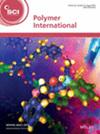求助PDF
{"title":"巯基马来酰亚胺点击化学设计用于酮洛芬手性分离的氨基功能化分子印迹聚合物","authors":"May Abdullah Abomuti","doi":"10.1002/pi.6762","DOIUrl":null,"url":null,"abstract":"<p>A molecularly imprinted polymer was developed to selectively adsorb <i>S</i>-ketoprofen (S-KP) and chirally separate it from a racemic mixture. Synthesis involves condensation polymerization of 4-mercaptophenol and 4-nitrophenol with formaldehyde to obtain a thiolated/nitro-functionalized polymer that was further reduced to an amino-functionalized polymer (HS-P-NH<sub>2</sub>) using sodium dithionite. Finally, the <i>S</i>-imprinted polymer (S-KP-P) was prepared by imprinting S-KP onto HS-P-NH<sub>2</sub>, followed by post-crosslinking with bis(maleimido)ethane through thiol–maleimide click reaction. Confirmation of the successful functionalization and crosslinking was done via structural characterization techniques. Kinetic studies showed that the crosslinking reaction followed second-order kinetics, with thermodynamic analysis indicating a spontaneous, exothermic process. In the adsorption experiments, S-KP-P manifested better enantioselectivity in the maximum capacity of adsorptions of 422 mg g<sup>−1</sup> for S-KP <i>versus</i> 243 mg g<sup>−1</sup> for R-KP. The Langmuir model provided the best fit to the isotherm data, confirming monolayer adsorption on homogeneous binding sites. Chiral separation experiments using column chromatography demonstrated the ability of S-KP-P to resolve (±)-KP, yielding 97% enantiomeric excess (ee) for R-KP in the first elution and 94% ee for S-KP in the second. In contrast, the non-imprinted polymer showed no enantioselectivity. The results confirm the potential of S-KP-P for efficient enantioselective separation in pharmaceutical applications. © 2025 Society of Chemical Industry.</p>","PeriodicalId":20404,"journal":{"name":"Polymer International","volume":"74 8","pages":"696-709"},"PeriodicalIF":3.6000,"publicationDate":"2025-04-11","publicationTypes":"Journal Article","fieldsOfStudy":null,"isOpenAccess":false,"openAccessPdf":"","citationCount":"0","resultStr":"{\"title\":\"Design of an amino-functionalized molecularly imprinted polymer via thiol–maleimide click chemistry for chiral separation of ketoprofen\",\"authors\":\"May Abdullah Abomuti\",\"doi\":\"10.1002/pi.6762\",\"DOIUrl\":null,\"url\":null,\"abstract\":\"<p>A molecularly imprinted polymer was developed to selectively adsorb <i>S</i>-ketoprofen (S-KP) and chirally separate it from a racemic mixture. Synthesis involves condensation polymerization of 4-mercaptophenol and 4-nitrophenol with formaldehyde to obtain a thiolated/nitro-functionalized polymer that was further reduced to an amino-functionalized polymer (HS-P-NH<sub>2</sub>) using sodium dithionite. Finally, the <i>S</i>-imprinted polymer (S-KP-P) was prepared by imprinting S-KP onto HS-P-NH<sub>2</sub>, followed by post-crosslinking with bis(maleimido)ethane through thiol–maleimide click reaction. Confirmation of the successful functionalization and crosslinking was done via structural characterization techniques. Kinetic studies showed that the crosslinking reaction followed second-order kinetics, with thermodynamic analysis indicating a spontaneous, exothermic process. In the adsorption experiments, S-KP-P manifested better enantioselectivity in the maximum capacity of adsorptions of 422 mg g<sup>−1</sup> for S-KP <i>versus</i> 243 mg g<sup>−1</sup> for R-KP. The Langmuir model provided the best fit to the isotherm data, confirming monolayer adsorption on homogeneous binding sites. Chiral separation experiments using column chromatography demonstrated the ability of S-KP-P to resolve (±)-KP, yielding 97% enantiomeric excess (ee) for R-KP in the first elution and 94% ee for S-KP in the second. In contrast, the non-imprinted polymer showed no enantioselectivity. The results confirm the potential of S-KP-P for efficient enantioselective separation in pharmaceutical applications. © 2025 Society of Chemical Industry.</p>\",\"PeriodicalId\":20404,\"journal\":{\"name\":\"Polymer International\",\"volume\":\"74 8\",\"pages\":\"696-709\"},\"PeriodicalIF\":3.6000,\"publicationDate\":\"2025-04-11\",\"publicationTypes\":\"Journal Article\",\"fieldsOfStudy\":null,\"isOpenAccess\":false,\"openAccessPdf\":\"\",\"citationCount\":\"0\",\"resultStr\":null,\"platform\":\"Semanticscholar\",\"paperid\":null,\"PeriodicalName\":\"Polymer International\",\"FirstCategoryId\":\"92\",\"ListUrlMain\":\"https://scijournals.onlinelibrary.wiley.com/doi/10.1002/pi.6762\",\"RegionNum\":4,\"RegionCategory\":\"化学\",\"ArticlePicture\":[],\"TitleCN\":null,\"AbstractTextCN\":null,\"PMCID\":null,\"EPubDate\":\"\",\"PubModel\":\"\",\"JCR\":\"Q2\",\"JCRName\":\"POLYMER SCIENCE\",\"Score\":null,\"Total\":0}","platform":"Semanticscholar","paperid":null,"PeriodicalName":"Polymer International","FirstCategoryId":"92","ListUrlMain":"https://scijournals.onlinelibrary.wiley.com/doi/10.1002/pi.6762","RegionNum":4,"RegionCategory":"化学","ArticlePicture":[],"TitleCN":null,"AbstractTextCN":null,"PMCID":null,"EPubDate":"","PubModel":"","JCR":"Q2","JCRName":"POLYMER SCIENCE","Score":null,"Total":0}
引用次数: 0
引用
批量引用




 求助内容:
求助内容: 应助结果提醒方式:
应助结果提醒方式:


